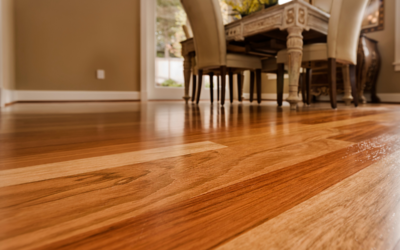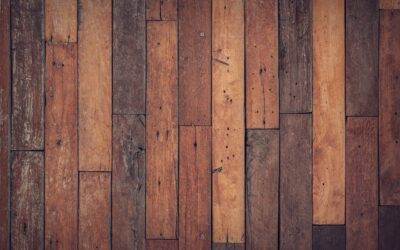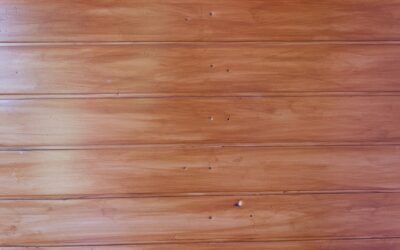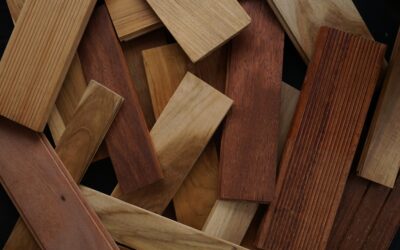Revitalize Your Home with Hard Floor Refinishing: Tips and Tricks for a Stunning Makeover
Hard floor refinishing is the process of restoring and renewing the appearance of hard floors, such as hardwood. This process can help to improve the durability and longevity of the floors, as well as enhance their overall appearance. Hard floor refinishing has been around for many years and has evolved over time to become a popular option for homeowners looking to revitalize their floors.
The history of hard floor refinishing dates back to ancient times when people would use natural materials like oils and waxes to protect and enhance the appearance of their floors. In more recent history, refinishing techniques have become more advanced with the introduction of sanding machines and chemical finishes. Today, there are a variety of methods and products available for hard floor refinishing, making it a versatile and effective solution for homeowners.
Key Takeaways
- Hard floor refinishing can restore the beauty and durability of your floors.
- Refinishing your hard floors can increase the value of your home and improve indoor air quality.
- Hardwood, bamboo, cork, and engineered wood floors are suitable for refinishing.
- Choosing the right refinishing method depends on the type of floor and the level of damage.
- Preparing your home for refinishing involves removing furniture and covering vents and electrical outlets.
Benefits of Refinishing Your Hard Floors
There are several benefits to refinishing your hard floors. One of the main advantages is increased durability and longevity. Over time, hard floors can become worn and damaged from foot traffic, spills, and other daily wear and tear. Refinishing the floors can help to restore their protective layer and make them more resistant to scratches, stains, and other damage. This can extend the lifespan of your floors and save you money in the long run.
Another benefit of refinishing your hard floors is improved appearance and value. Over time, floors can become dull and faded, losing their original luster. By refinishing them, you can bring back their natural beauty and make them look like new again. This can greatly enhance the overall aesthetic of your home and increase its value if you ever decide to sell.
Refinishing your hard floors is also a cost-effective alternative to replacing them entirely. Installing new flooring can be a costly and time-consuming process, whereas refinishing can be done at a fraction of the cost and in a shorter amount of time. By refinishing your floors, you can achieve the same results as replacing them without breaking the bank.
Choosing the Right Refinishing Method for Your Floors
| Refinishing Method | Pros | Cons |
|---|---|---|
| Sanding and Staining | Can change the color of the floor, removes deep scratches and stains | Can be messy, time-consuming, and expensive |
| Screen and Recoat | Quick and affordable, can restore shine and protect the floor | Does not remove deep scratches or stains, may need to be repeated more frequently |
| Refinishing with Hardwood Veneer | Can be a cost-effective alternative to sanding and staining, can change the color of the floor | May not be suitable for floors with deep scratches or stains, may not last as long as traditional refinishing methods |
When it comes to refinishing your hard floors, there are several methods to choose from, including sanding, buffing, and deep cleaning. The method you choose will depend on the type of floor you have and the extent of the damage.
Sanding is a common method used for refinishing hardwood floors. It involves using a sanding machine to remove the top layer of finish and expose the bare wood underneath. This allows for any scratches or stains to be sanded away, and then a new coat of stain and finish can be applied to restore the floor’s appearance.
Deep cleaning is a method that can be used for refinishing tile floors. It involves using a specialized cleaning solution and a scrub brush to remove dirt, grime, and stains from the tiles. Once the tiles are clean, they can be resealed to protect them and enhance their appearance.
Preparing Your Home for Hard Floor Refinishing
Before you begin the process of refinishing your hard floors, it’s important to properly prepare your home to ensure a successful job. This includes removing all furniture and rugs from the room, covering vents and electrical outlets, and protecting any adjacent surfaces that could be damaged by dust or chemicals.
Removing furniture and rugs is essential to allow for easy access to the entire floor surface. This will make it easier to sand or buff the floors without any obstructions. It’s also important to cover vents and electrical outlets to prevent dust or debris from getting inside and causing damage.
Protecting adjacent surfaces is another important step in preparing your home for hard floor refinishing. This can be done by using plastic sheeting or drop cloths to cover any furniture, walls, or countertops that could be affected by dust or chemicals. It’s also a good idea to seal off the room with plastic sheeting to contain any dust or fumes that may be produced during the refinishing process.
Step-by-Step Guide to Refinishing Your Hard Floors
Now that you’ve properly prepared your home, it’s time to start refinishing your hard floors. Here is a step-by-step guide to help you through the process:
1. Clean the floors: Before you begin refinishing, it’s important to thoroughly clean the floors to remove any dirt, dust, or debris. This can be done by sweeping or vacuuming the floors, and then mopping them with a mild cleaner.
2. Sanding: Start with a coarse grit sandpaper and gradually work your way up to a finer grit.
3. Apply stain (optional): If you want to change the color of your hardwood floors, you can apply a stain after sanding or buffing. Make sure to follow the manufacturer’s instructions and apply the stain evenly with a brush or rag.
4. Apply finish: Once the floors are sanded, buffed, and stained (if desired), it’s time to apply a new coat of finish. This can be done with a brush or roller, and it’s important to follow the manufacturer’s instructions for drying times and application techniques.
5. Allow the finish to dry: After applying the finish, it’s important to allow it to dry completely before walking on the floors or replacing furniture. This can take anywhere from a few hours to a few days, depending on the type of finish used.
6. Repeat if necessary: Depending on the condition of your floors, you may need to repeat the refinishing process multiple times to achieve the desired results. This can involve additional sanding, buffing, staining, or applying more coats of finish.
Tips for Maintaining Your Refinished Hard Floors
Once your hard floors have been refinished, it’s important to properly care for them to maintain their appearance and prolong their lifespan. Here are some tips for maintaining your refinished hard floors:
1. Regularly sweep or vacuum: Regularly sweeping or vacuuming your floors will help to remove dirt, dust, and debris that can scratch or dull the finish. Use a soft-bristle broom or a vacuum with a hardwood floor attachment to avoid scratching the surface.
2. Use a damp mop: To clean your refinished floors, use a damp mop with a mild cleaner specifically designed for hard floors. Avoid using excessive water or harsh chemicals, as these can damage the finish.
3. Wipe up spills immediately: Spills should be wiped up immediately to prevent them from seeping into the wood or causing stains. Use a soft cloth or paper towel to blot up the spill, and then clean the area with a damp cloth.
4. Avoid wearing high heels or shoes with sharp heels: High heels and shoes with sharp heels can cause dents and scratches in your refinished floors. Consider wearing slippers or socks indoors to protect the surface.
5. Use furniture pads: To prevent scratches and dents from furniture, use furniture pads on the legs of chairs, tables, and other heavy items. These pads can be easily attached to the bottom of furniture and will help to protect your floors.
6. Avoid dragging heavy objects: When moving furniture or other heavy objects, avoid dragging them across your refinished floors. Instead, use furniture sliders or lift the objects to prevent scratching or damaging the surface.
Adding a Personal Touch: Decorative Finishes for Your Refinished Floors
One way to add a personal touch to your refinished hard floors is by using decorative finishes. There are several options available, including staining, stenciling, and adding borders or patterns.
Staining is a popular option for adding color and depth to hardwood floors. It involves applying a stain to the wood after sanding and before applying the finish. Stains come in a variety of colors and can be used to achieve a natural or more dramatic look.
Stenciling is another option for adding a decorative touch to your refinished floors. This involves using stencils and paint to create patterns or designs on the surface of the floor. Stencils can be purchased or made yourself, and they can be used to create a variety of looks, from simple borders to intricate designs.
Adding borders or patterns is another way to personalize your refinished floors. This can be done by using different types of wood or tile to create a border around the edges of the room, or by using different colors or sizes of tiles to create a pattern within the floor.
Cost-Effective Options for Hard Floor Refinishing
Refinishing your hard floors doesn’t have to break the bank. There are several cost-effective options available that can help you save money while still achieving great results.
One cost-effective option is to do it yourself. With the right tools and materials, refinishing your hard floors can be a DIY project that can save you money on labor costs. There are many resources available online that provide step-by-step instructions and tips for refinishing different types of floors.
Another cost-effective option is to rent the necessary equipment instead of buying it. Sanding machines, buffing machines, and other tools can be expensive to purchase, but they can often be rented from home improvement stores or equipment rental companies at a fraction of the cost.
Using water-based finishes instead of oil-based finishes is another way to save money on hard floor refinishing. Water-based finishes are typically less expensive than oil-based finishes and offer similar durability and protection. They also have the added benefit of being more environmentally friendly and having a lower odor.
Hiring a Professional vs. DIY Refinishing: Pros and Cons
When it comes to refinishing your hard floors, you have the option to hire a professional or do it yourself. Both options have their pros and cons, and the best choice will depend on your budget, time constraints, and level of expertise.
Hiring a professional can save you time and ensure a high-quality result. Professionals have the experience and knowledge to properly prepare your floors, choose the right refinishing method, and apply the finish evenly. They also have access to professional-grade equipment and materials that may not be available to the average homeowner.
However, hiring a professional can be more expensive than doing it yourself. Labor costs can add up quickly, especially if you have a large area to refinish. Additionally, you may have to wait for an appointment and work around the professional’s schedule.
On the other hand, DIY refinishing can save you money and allow you to work at your own pace. You have control over every step of the process and can choose the materials and finishes that best suit your needs. DIY refinishing can also be a rewarding project that allows you to learn new skills and take pride in the finished result.
However, DIY refinishing requires time, effort, and attention to detail. It’s important to properly prepare your floors, choose the right refinishing method, and follow all instructions carefully. If you don’t have experience with this type of project or don’t feel confident in your abilities, it may be best to hire a professional to ensure a successful result.
In conclusion, hard floor refinishing is a great way to improve the durability, appearance, and value of your home. Whether you choose to hire a professional or do it yourself, following the proper steps and taking care of your refinished floors will help them last for years to come. With the right preparation, materials, and techniques, you can achieve beautiful results that will enhance the overall aesthetic of your home.
If you’re looking for more information on hard floor refinishing, be sure to check out this informative article on “The Benefits of Hardwood Floor Refinishing” from Array. This article dives deep into the advantages of refinishing your hardwood floors, including restoring their natural beauty, increasing their lifespan, and improving indoor air quality. Click here to read the full article and discover why hardwood floor refinishing is a worthwhile investment for any homeowner.
FAQs
What is hard floor refinishing?
Hard floor refinishing is the process of restoring the surface of a hard floor, such as hardwood, tile, or concrete, to its original condition. This involves sanding, buffing, and applying a new finish to the floor.
Why should I consider hard floor refinishing?
Hard floor refinishing can improve the appearance of your floors, remove scratches and stains, and extend the life of your flooring. It can also increase the value of your home or business.
What types of hard floors can be refinished?
Hardwood, tile, and concrete floors can all be refinished. However, the process and materials used may vary depending on the type of flooring.
How long does hard floor refinishing take?
The length of time it takes to refinish a hard floor depends on the size of the area, the type of flooring, and the extent of the damage. Generally, it can take anywhere from a few days to a week or more.
Can I refinish my hard floors myself?
While it is possible to refinish hard floors yourself, it is recommended to hire a professional. Refinishing floors requires specialized equipment and knowledge, and mistakes can be costly to fix.
How often should I refinish my hard floors?
The frequency of hard floor refinishing depends on the amount of foot traffic and wear and tear on the floors. Generally, it is recommended to refinish hardwood floors every 7-10 years, while tile and concrete floors may only need to be refinished every 15-20 years.








